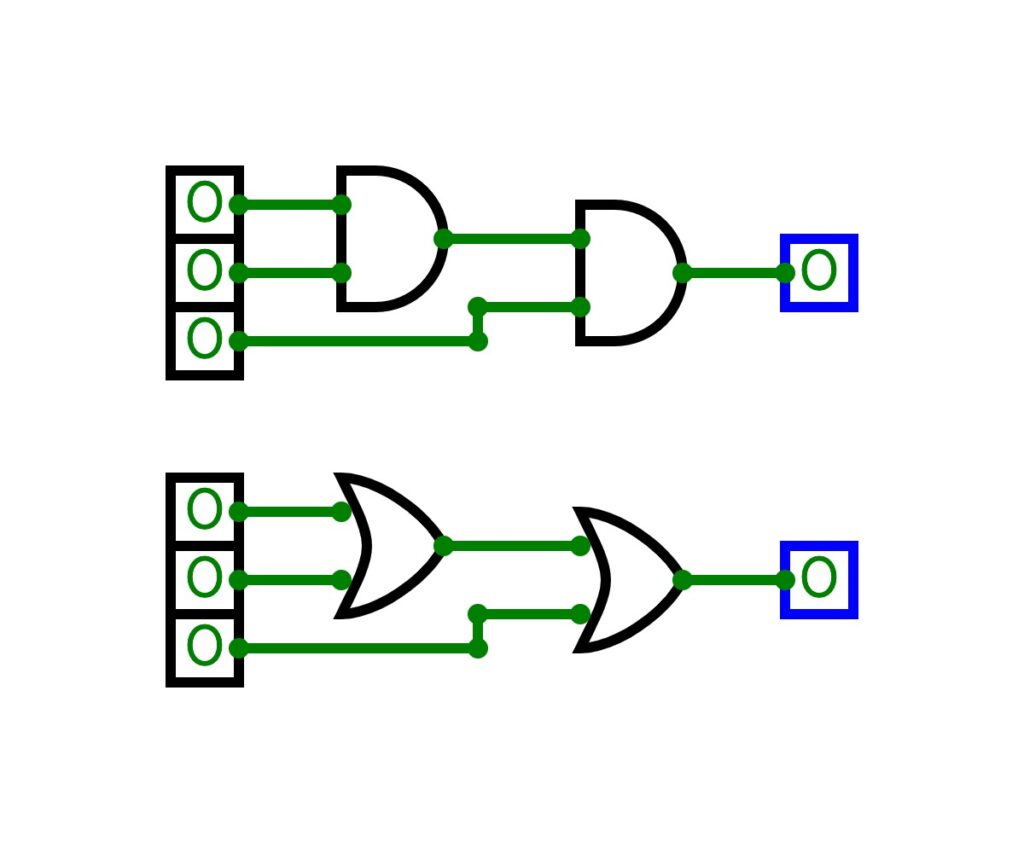Preview
We’ve learned a number of magic tricks! Now we can start performing two magic tricks in a row to make new magic tricks. We refer to the new magic tricks as compositions of the old ones. Or we say that a composition of logic gates forms a logic circuit.
You’ve already seen a few examples of compositions of gates, each involving the NOT gate:
- OR then NOT gives NOR,
- AND then NOT gives NAND,
- XOR then NOT gives XNOR.
Play
First, consider the NOT-NOT composition. What would the diagram for a NOT-NOT composition look like? What does its truth table look like? How would you use a sentence to describe what the NOT-NOT gate does to an input?
What about other examples? The example below shows an AND-AND gate and an OR-OR or gate. Notice that in these examples, the first gate and the second gate in the composition have two inputs and one output. This means that the output of the first gate serves as one input of the second gate and that the composition has three inputs and one output.
Play with the inputs to see how the outputs of the compositions are affected.
[CircuitVerse embed: https://circuitverse.org/simulator/embed/and-and-and-or-or]

Progress
Drag the gates to create a logic diagram represented by the Boolean expression:
$(A \cdot B) \cdot (C \cdot D)$
Drag the gates to create a logic diagram represented by the Boolean expression:
$(A \cdot B) \oplus (C + D)$
When two different logic circuits have the same truth table, we consider them to be equivalent. This is because for the same set of inputs, they return the same set of outputs. There are famous examples called De Morgan’s laws.
[2: something with De Morgan’s law???]
Practice
[WW1: show images of two-stage compositions, ask for Boolean expressions and truth tables]
Some examples: A(B+C), AB+CD, ABNOT+CD, A+B(C+D), A+B(C+DNOT), A+B(CD), A+B(CDNOT), AB(C+D), ABNOT(C+D), (A+B)CD, (A+BNOT)CDNOT – Don’t have to use all of them of course, but I would want at least one combination with a NAND or NOR gate



